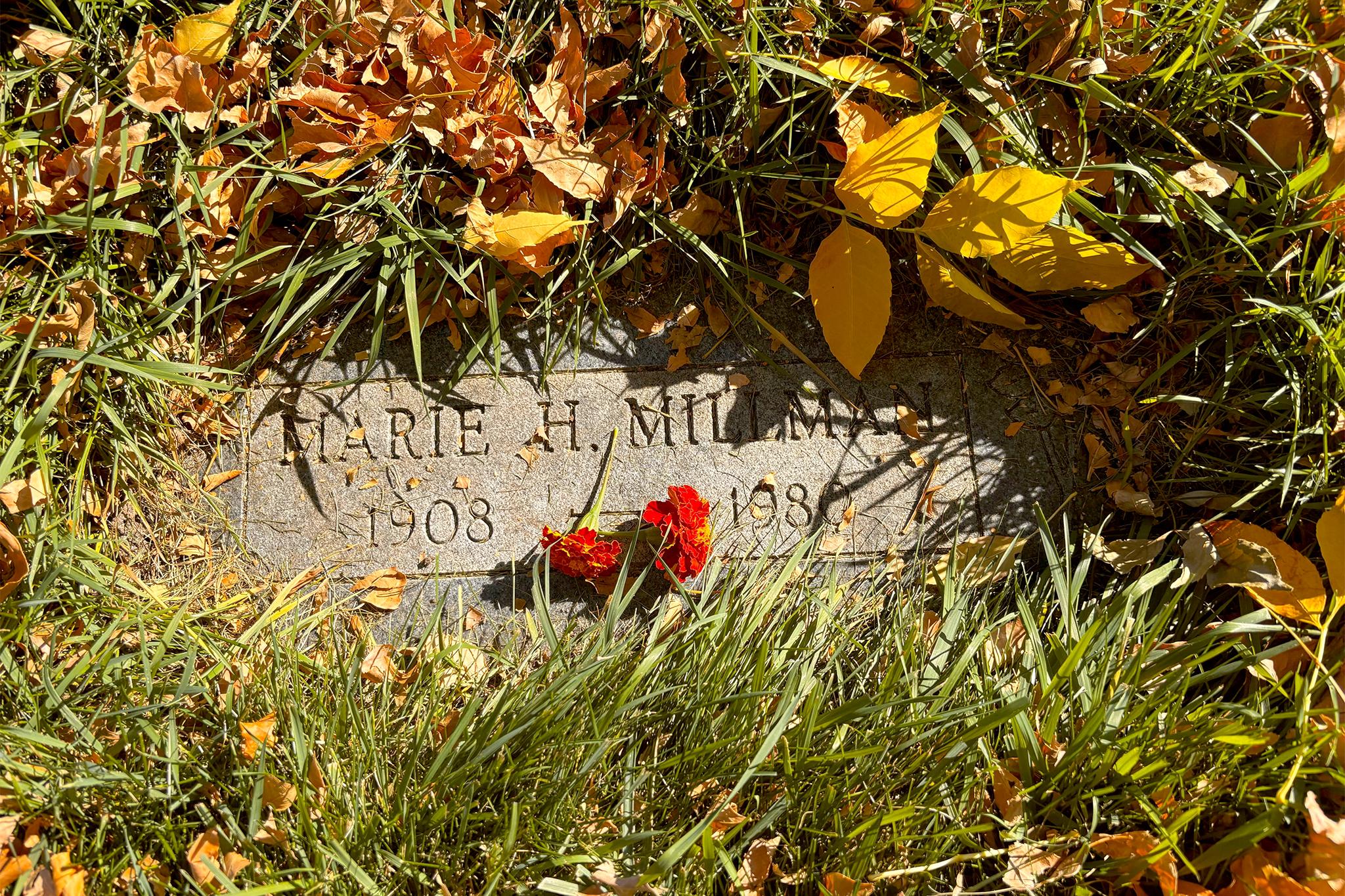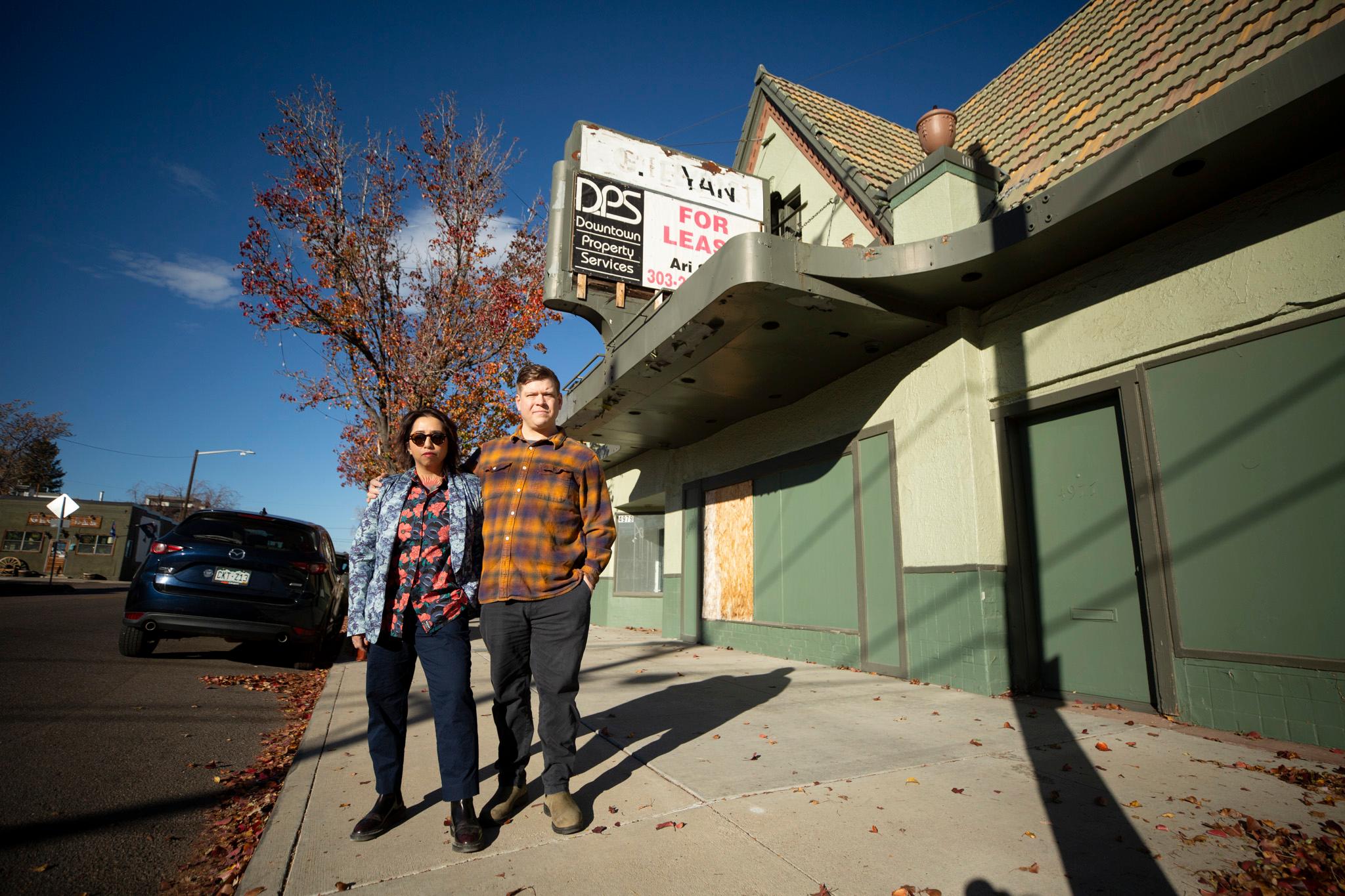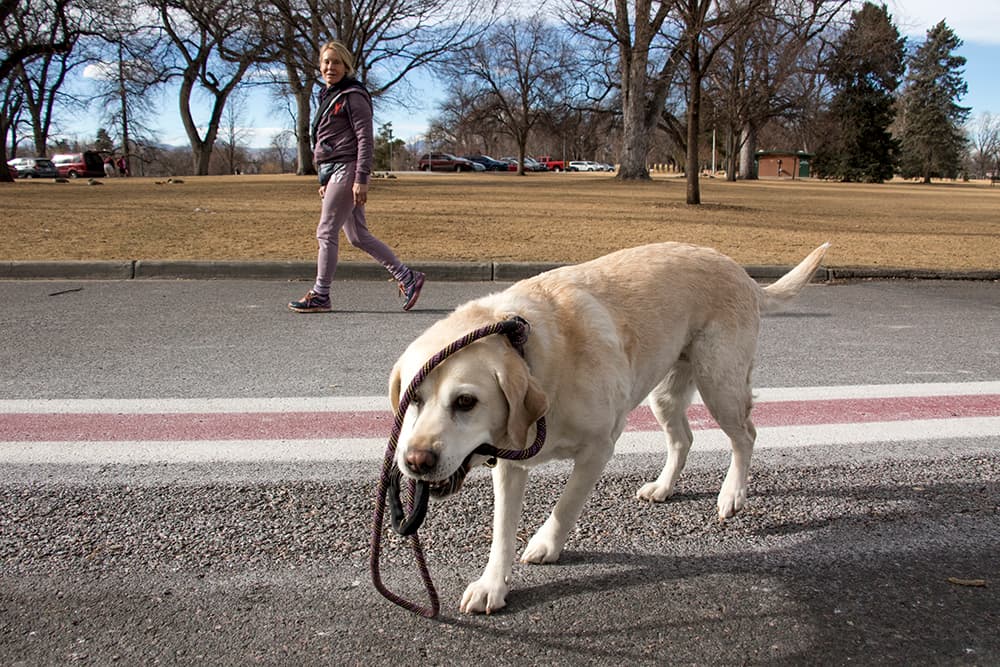Silvia Pettem is an expert on cemeteries across Colorado, but her latest obsession has brought her to the back of Denver’s Fairmount Cemetery, where a small grave is covered in grass and fallen leaves.
Tucked away on Plot 67, Pettem is certain she has found the grave of America's most elusive woman — a fugitive who escaped a Chicago prison in 1940 and has been missing ever since.
“I’m 99.9 percent sure,” Pettem said as she drove me through the sprawling cemetery on Oct. 17.
The plot we were looking for was in the far right corner of the 280 acres that make up the second-oldest cemetery in Denver.
When we arrived at the grave, we set up two camping chairs near the grave and Pettem told me the story of the “Blonde Tigress.”
“We are sitting at the grave of a woman named Marie Millman,” Pettem said. “That's the name on her grave, but I believe that she is actually an alias for Eleanor Jarman.”
The life of the 'most dangerous woman alive'
Also known as the Blonde Tigress, she was once called the most dangerous woman alive. Her story inspired an episode of the long-running television series Gang Busters, and the Chicago Tribune reported that the story captivated Chicago in the ‘30s.
“There were newspaper articles written in the 1930s, very sensationalized, about how she was the most dangerous woman in America,” Pettem said. “And she was vicious. And she kicked victims when they were lying on the ground and things like that.”
Jarman and her boyfriend, George Dale, completed around 37 robberies in Chicago in the summer of 1933.
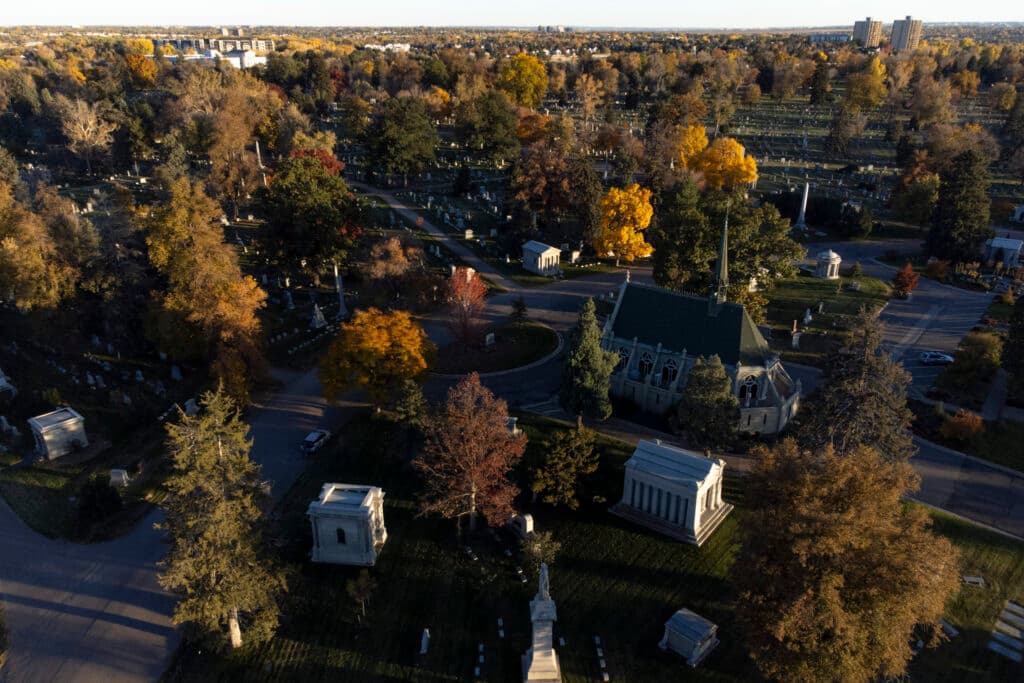
“George was kind of her partner in crime, and he introduced her into being the lookout or distracting the store owner when they went into the store. And I have no idea if she wanted to do that or not, but I think she was pretty much a victim in all of this because she was just trying to stay alive and feed her children and pay her rent,” Pettem said. “And George comes along, handsome guy, and he has money, he paid the rent and bought the food. And so she went along with it.”
But everything changed when a robbery went wrong. Dale shot and killed the owner of the clothing store they were robbing.
In 1934, Dale was executed in the electric chair. Jarman and another accomplice were sentenced to 199 years. She was put in a women's prison about 100 miles southwest of Chicago. Jarman was said to be a model prisoner, according to Pettem.
“There's records of everything, which is amazing,” Pettem said. “I mean, the more you dig into this, you think, well, how are you going to find anything from the 1930s? But there's court records and prison records and police records and a lot to go on.”
The records show Jarman was well-behaved and kept to herself for her first seven years of incarceration. But then came Mary Foster. Foster had escaped from two other prisons before she and Jarman were imprisoned together.
On Aug. 8, 1940, she and Jarman escaped together. The two stole clothes from staff members — a polka-dot dress and a blue suit — and climbed a 12-foot fence. Then they hitchhiked.
“There's news reports of people who picked them up but had no idea they were escaped prisoners. And the first person that picked them up was an insurance agent, and the next day in the newspaper (there was) a picture of the polka-dot dress. And he contacted the prison and said, ‘I picked them up yesterday, and I drove them from here to here,’” Pettem said. “And then someone else said, ‘Well, I drove them from there to there.’ Anyway, they hitchhiked towards Chicago and just disappeared.”
The other woman was caught about two months later, but Jarman was never seen again.
'I wanted to figure out what happened to her.'
Pettem found this mystery while looking through a list of escaped fugitives, as one does. Pettem is a longtime Colorado historian who writes about interesting women. She saw Jarman's story and wanted to get to the bottom of it.
“I wanted to find out more about her,” Pettem said. “I wanted to figure out what happened to her.”
Jarman’s two sons had tried over the years to find their mom through newspaper ads, and there are reports she would respond in coded messages. Her grandson, now deceased, continued the search.
“The grandson said that Eleanor Jarman went by an alias of either Marie Melman or Marie Millman. And so that gave me something to search. Not a lot, but something,” Pettem said.

After searching through marriage records and searching for her aliases on Ancestry.com, Pettem found what she was looking for, right in the state she spent her entire career researching.
There was a Marie Millman in Denver with no birth record, no recorded family members, “no nothing,” Pettem said.
“There was no record of her until 1951. I mean, it's like she wasn't ever born. She didn't ever have parents.” Pettem said. “Suddenly, there's a paper trail that starts in 1951, and that was the year she showed up in Denver and she worked as a waitress.”
Millman worked at different restaurants alongside East Colfax Avenue, according to records Pettem found. The only one that’s still standing is Pete’s Kitchen, now one of the city’s classic eateries.
“Unfortunately, they don't have anybody (working) who remembers that era, but there's got to be somebody, I think, who would remember this woman,” Pettem said. “Going on the basis of the paper trail that I found and the probate records that showed no known heirs, and the fact that the grandson had said that her alias was either Marie Melman or Marie Millman, and no other person of that name in the entire country fits the age range, I'm fairly certain that this is her.”
Millman died in 1980. Her grave is “right in the middle of [the cemetery], where you see absolutely nothing,” Pettem said.
The only way to prove it?
In order for Pettem to prove her theory, Millman's body would have to be exhumed. But that couldn’t happen unless a court ordered it or a family member agreed to it. And there are no records of Millman having a family — just Pettem’s theory that she was really Eleanor Jarman.
Now, Jarman’s granddaughter and great-granddaughter believe Pettem's theory. They had gotten in touch with Pettem when they learned she was writing her book, and they came to visit Denver. Pettem took them to Millman's grave and to Pete’s Kitchen.
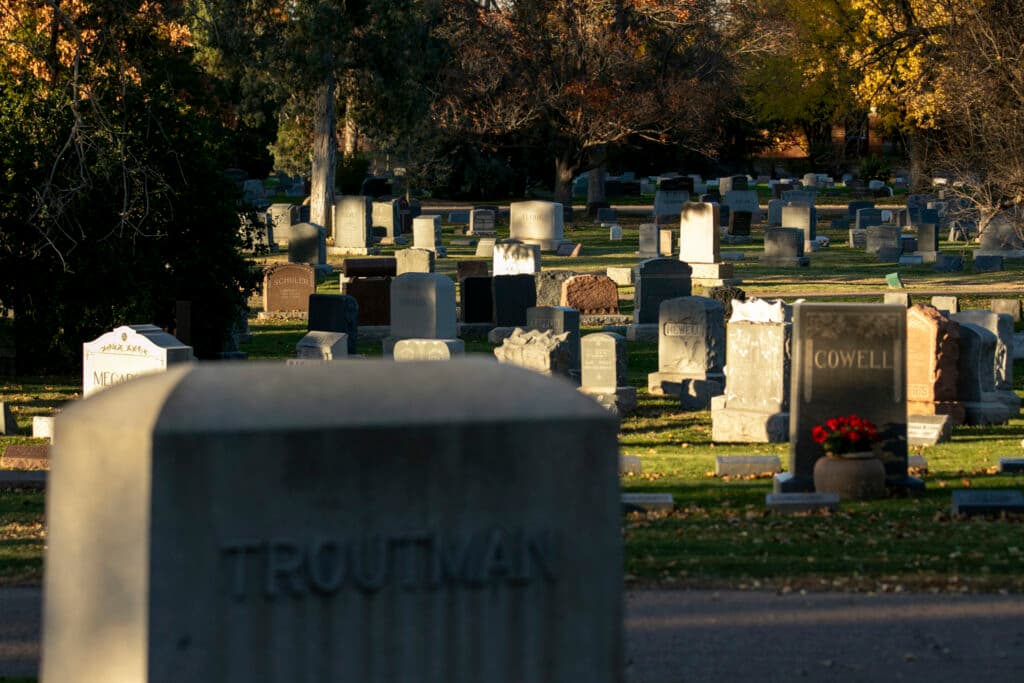
For now, Pettem is waiting on someone to come forward — perhaps saying they remember Millman serving them at Pete’s — or for someone to prove her theory wrong.
She’s 99.9 percent sure of her story. But she’s waiting for that last fraction of a percent — to turn a theory into history.
“I'm thinking there's got to be somebody that knows her, and I keep thinking, somebody's going to come forward,” Pettem said.

